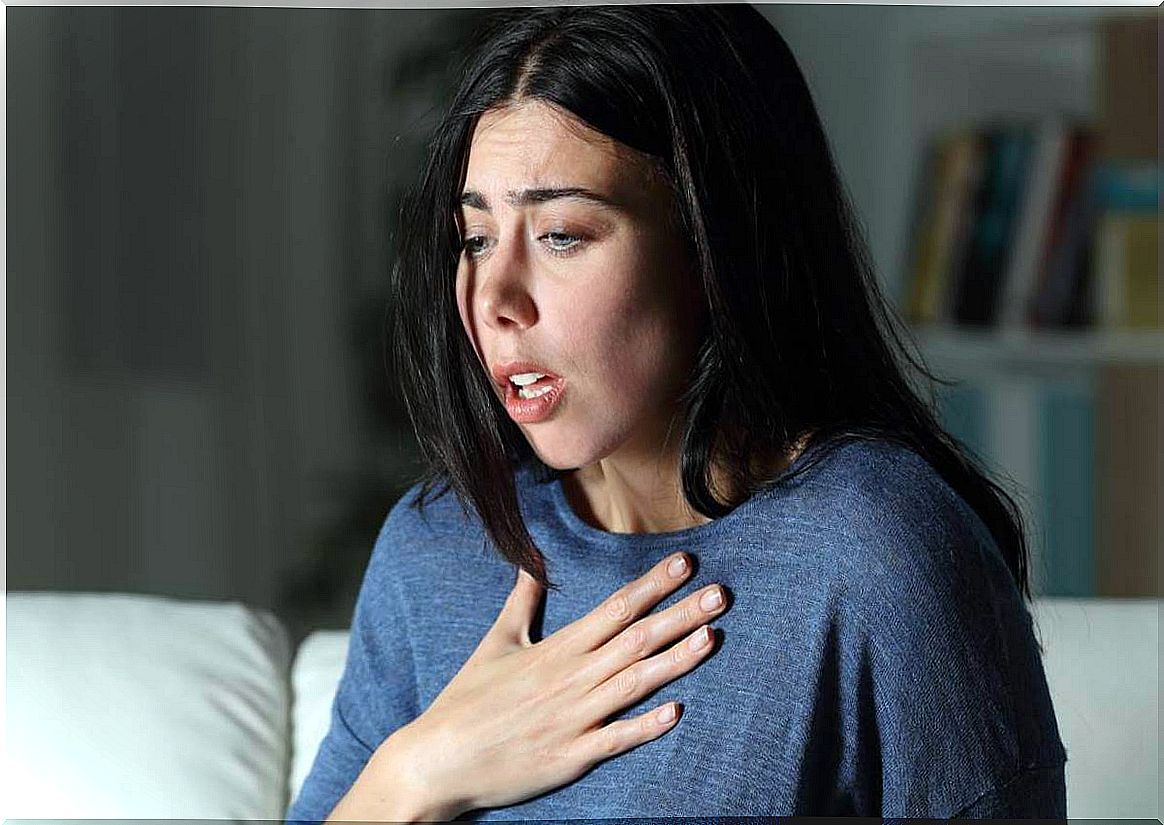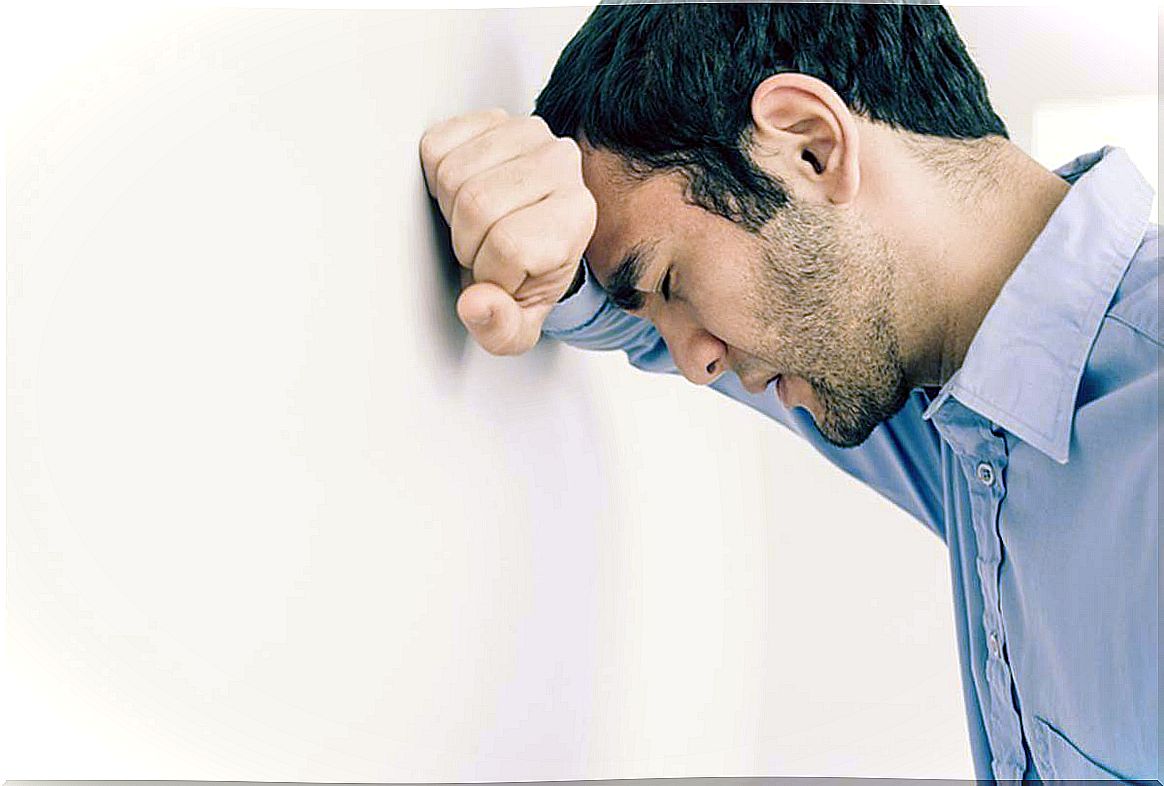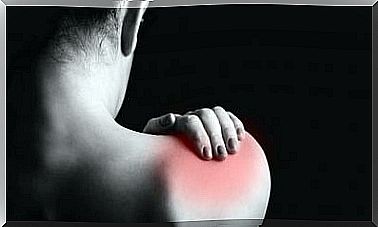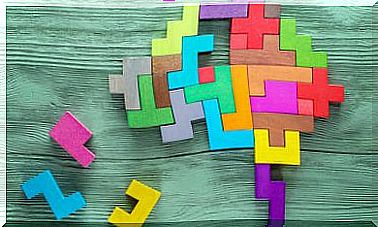Anxiety And Shortness Of Breath: Why Does It Occur?

Anxiety and shortness of breath almost always go hand in hand. Pressure in the chest, feeling that not enough air reaches the lungs, dizziness, tachycardia … Many people experience this reality frequently, especially if they carry a state of high stress and anxiety for a long time. For what is this? What explains it?
The truth is that psychology and psychiatry have spent years analyzing how cognitive and affective processing mediate these types of psychological conditions. However, the way in which these disorders impact on a physiological level is sometimes elusive. In fact, the symptoms associated with anxiety are so wide and diverse that it never ceases to amaze us.
However, when it comes to dyspnea (shortness of breath or shortness of breath) it is a well-understood phenomenon worth delving into. It is important that people who suffer from this type of clinical entities know the mechanics of this symptomatology to understand what is happening to them.
Knowing that it comes in from normal and that they are not suffering, for example, a heart attack always helps.

Anxiety and shortness of breath: symptoms, causes and therapeutic measures
To breathe. Nothing is so easy for us, to the point that we hardly wait in this process. However, few physiological mechanisms are so complex and in turn require so many organs, systems and multiple corners of the body. To begin with, breathing is a very intense muscular process, one that requires a direct connection to the autonomic nervous system as well.
Likewise, another aspect that sometimes eludes us is the intimate relationship that all these systems have with the emotional state. Furthermore, studies such as the one carried out at the University of Uppsala, for example, have found a direct relationship between states. such as depression and anxiety in the development of dyspnea or breathing problems. It is important to consider how psychological problems impact respiratory processes.
Let’s delve into more aspects.
What are the symptoms of anxiety and shortness of breath?
People who suffer from this psychological condition usually agree on one fact. Many describe feeling slight pressure on the chest throughout the day. It is not something painful, but it is annoying. It is like a kind of burning that prevents them, at times, from finishing breathing normally.
- However, there are times when the level of emotional and physiological activation is higher, it is common to experience tachycardias. The choking sensation becomes more intense and the person has the sensation of not being able to breathe.
- We feel more heat in the chest.
- These symptoms become more intense during panic attacks.
- This discomfort in the chest or the feeling of not being able to finish breathing causes continued fatigue.
- Breathing problems can be intensified at night, leading to insomnia.
- There is also a feeling of a lump in the throat.
- Weakness and dizziness are common.
- Upset stomach may appear.
- Symptoms are added to shortness of breath or dyspnea.
What causes these breathing problems when you have anxiety?
The reason why we usually experience such high symptoms with anxiety has an explanation. And it is still interesting. Research works such as those carried out at the University of San Diego by Dr. Martin Paulus explain it to us:
- Anxiety is an emotional state associated with a cognitive component.
- That is, the person experiences concern, fear or anguish in the face of a real or imagined threat, in the face of something that he interprets as dangerous.
- When this happens, the autonomic nervous system reacts by causing changes in the respiratory process.
- The brain interprets that you have to flee or react to that danger. Then the body prepares for it.
- The first thing it will do is send more oxygen to your muscles.
- To do this, it restricts what reaches the lungs. Faced with this event, the heart responds by beating faster to pump more blood to those muscles that, ultimately, must help us react and escape. Soon we felt warmth in our chest, tension in our limbs, and trouble breathing.
On the other hand, a phenomenon associated with anxiety and shortness of breath is hyperventilation. This is a common reality among people who suffer from panic disorders, phobias or generalized anxiety. The origin of this physiological event is in excessive breathing.
Hyperventilating or breathing too fast alters the

What strategies should we put into practice?
We know there is a link between anxiety and shortness of breath. What coping mechanism should we use to reduce this effect and feel better? In these situations, only one aspect needs to be clear: dyspnea, tachycardia, muscle or stomach pain are only psychosomatic symptoms of a problem.
The key in all cases is to face your own anxiety and that disorder that orchestrates it. For this, these types of treatments and resources will be of help:
- Cognitive-behavioral therapy, with which to transform irrational thoughts into rational ideas, manage emotions and establish more appropriate behaviors.
- Acceptance and commitment therapy techniques. They are adequate to accept what we cannot control, work on our values and prioritize needs.
- Drug therapy. In some cases, it will be necessary to resort to anxiolytics.
- Diaphragmatic breathing is the most beneficial for learning to regulate our breathing.
- Jacobson’s progressive muscle relaxation technique or Schultz’s autogenic training are also very positive.
To conclude, only one aspect should be noted. Anxiety is an enemy that threatens to increase its incidence in the coming months and years. We know what its mechanisms are and how it alters the quality of life. There are multiple strategies to learn to live with it without suffering: let’s put them into practice.









